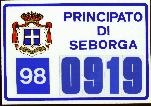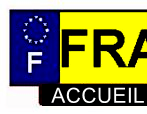

Why and How to collect License Plates ?
In the USA and Canada, collecting plates is quite common : plates are replaced every 2 to 10 years and show more and more graphics. Keeping old plates on the garage wall has become a part of the American culture. And vanities remind the American motorist about a part of his own history.
Elsewhere, collecting plates is less common : they may be thrown out, or kept for the next vehicle’s owner, as in Switzerland or Belgium; they may also be changed for the new model. Often, Europeans visitors collect American plates after traveling in North America, in San Franciso‘s Chinatown or Quebec city.
But there is also another way to get into the plate hobby : Just by looking at cars on the road and trying to understand codes, colors, etc... Until the day you think : why not collect and trade them... for real !
Actually; getting a plate per country is a fantastic challenge ! Not as easy as for stamps. Contacting collectors from everywhere in the world, through mail or e-mail is really an experience !
Some collectors are just interested in codes, or share photos they took when traveling. It’s another way to look at one’s environment. The way states decide about codes and number often has a political significance : For instance, you can’t determine which part of Belgium a car comes. In Europe, some countries always have the blue " Euroband " on the left, such as Luxembourg, but also countries who want to join the European Union, such as Malta, Cyprus and Turkey ! During the war in Bosnia, new plate designs have been a strong symbol of nationalism, as they are in some Russian republics.
HOW to get them ? The easiest way is to get them in junkyards. Being a member of a collector association may help to show you’re not going to use it for a stolen car, for instance. Then, do the same when you travel abroad : it’s sometimes easier when you’re a foreigner; but nearly impossible in Switzerland or Greece for instance. Then, that’s quite easy : contact collectors you can trust, such as members of ALPCA or Europlate and trade your extra plates through the mail or at meetings.
Of course, another way to get them is to buy them : many Web sites offer American plates. Pricing goes from $2 for a common one to $25 for most graphics and more..., without postage or foreign currency fees ($5 to $10). You also may subscribe to Listserv / Plates or buy on-line on E-Bay. The ALPCA newsletter also offers many classifieds.
Which License Plates to collect ?
These are a few ideas of collection themes :
- a plate for each French "département" (96)
- a plate for each American state, or Canadian province (51 + 13)
- a plate for each American state, corresponding to your birth year
- American graphic plates : animals, sports, universities, bicentennial (1976), kids plates, ...
- "sample" plates,
- a "state run" consisting of one plate for each year (the year has to be on the sticker, usually located on the rear plate)
- a plate for each European Union country
- motorcycle, mopeds, or even bicycle plates
- non rectangular plates (Canada North-West Territories, Tennessee in the 50's, Temporary ovals german plates,..)
- a plate for each country of a continent or the World
- a plate for each administrative subdivision of every country (the must !)
- diplomatic plates (difficult !)
- UN plates
- the first year of issuance for each country or state (expensive !)
- plates of former countries
- ...